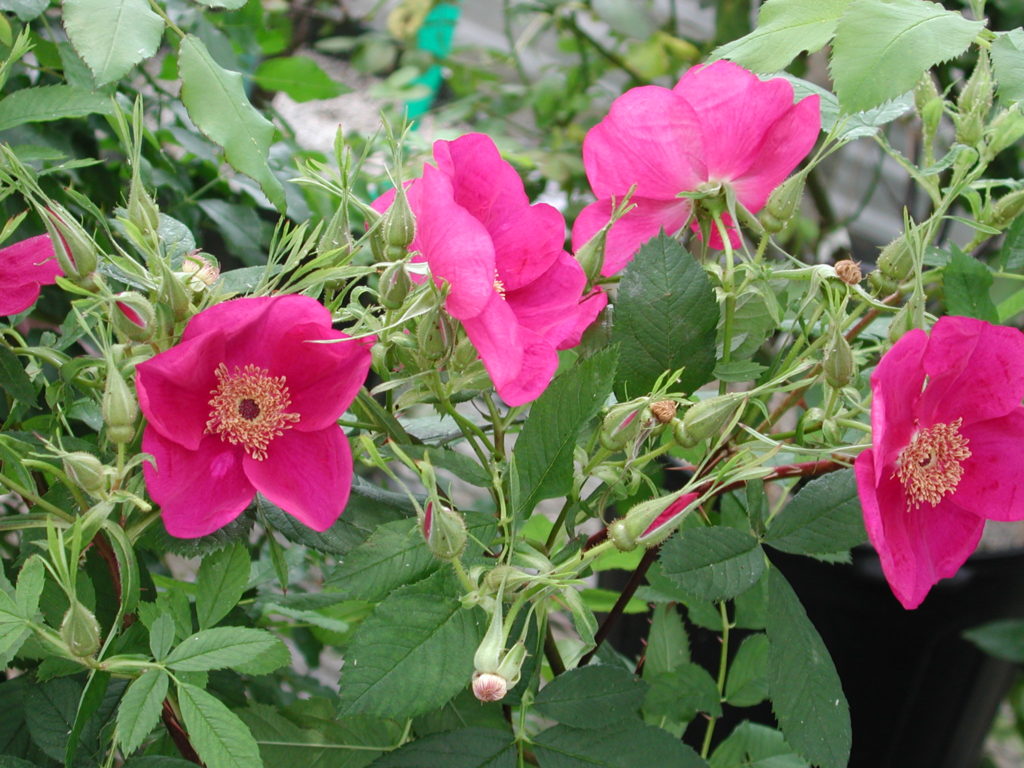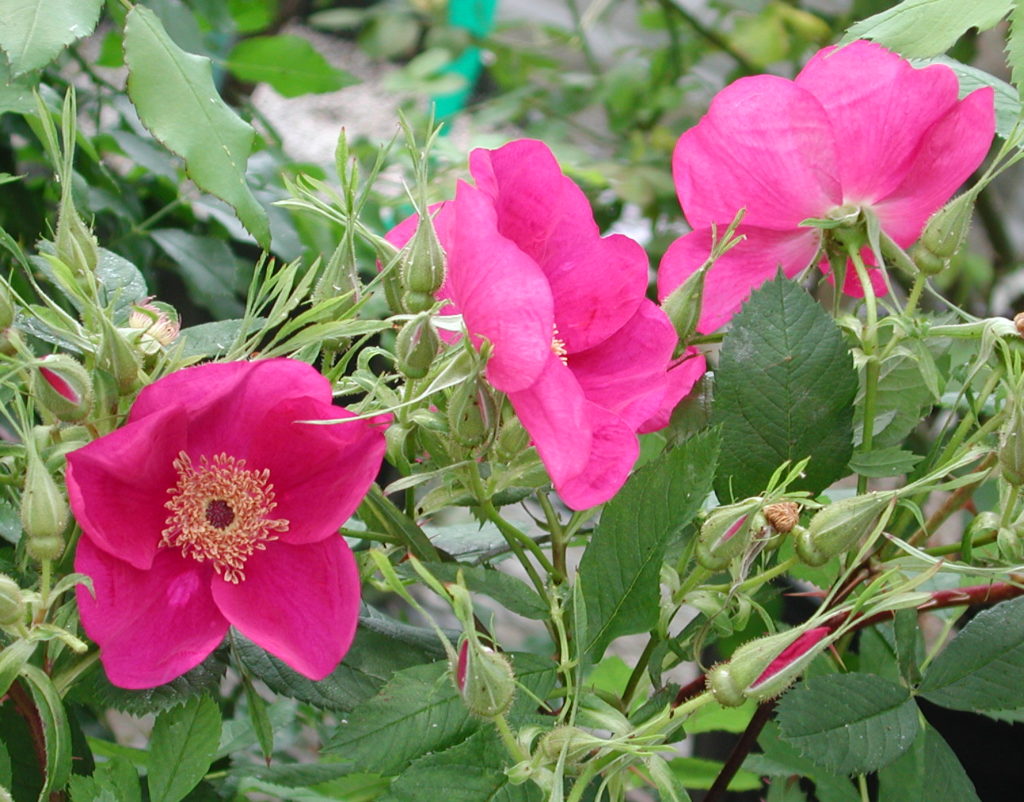
Dr. Basye created this strikingly mauve disease-resistant rose. It is the deepest purple and exhibits the typical characteristics of a Rugosa rose, which includes a high disease resistance and thick leaves. This rose blooms continuously during hot summers, making it a good candidate for Texas. Its color is so pigmented that “pigmentation spots” sometimes appear on the leaves themselves.
The main drawbacks for this rose include its tendency to lose its foliage near the bottom and a large number of thorns.
- Size: Medium to tall shrub
- Classification: Shrub rose
- Year Introduced: 1968
- Growth Habit: Bushy
- Height: 4-6ft
- Width: Up to 5ft
- Color: Dark mauve
- Bloom: Single bloom repeatedly produced during the late spring and early summer
- Fragrance: Very fragrant
- Foliage: Vigorous, heat tolerant, thorny
- Cold Hardiness: USDA Zone 3b to 9b
- Parentage:R. foliolosa X R. rugosa rubra

